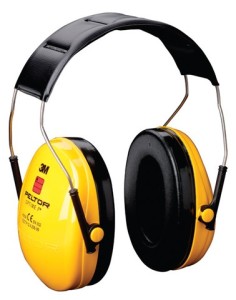Hearing loss caused by working conditions is entirely preventable by using correct control measures and hearing protection.
Yet, 17,000 people in the UK suffer deafness, ringing in the years or other ear conditions as the result of excessive noise at work (HSE).
There are many ways of preventing hearing loss or reducing the noise that employees are exposed to. Some control measures to consider are:
- Quieter machinery or equipment in an attempt to reduce noise exposure to a minimum
- Introducing engineering controls such as adding material to reduce vibrations from machinery (known as ‘damping’) or fitting silencers
- Modifying the paths by which noise will travel, for example, erecting enclosures around machinery that is particularly noisy or erecting panels in between work stations
- Finally, the last measure is investing in good quality hearing protection
Hearing protection should be issued to employees when extra protection is required, after other control measures to reduce noise have already been implemented, or as a short term measure whilst these other control measures are being implemented.
How to use Hearing Protection Effectively HSE’s Do’s and Don’ts
Do:
- Make sure that protectors give enough protection – aim at least to get below 85 dB at the ear; there are calculators available online which will help you decide which protection is best
- Select protectors which are suitable for the working environment, e.g. consider how comfortable they are to wear for long periods of time and how hygienic they are
- Think about what other PPE might need to be worn as well
- Provide a range of hearing protection as one model might not suit all
Don’t:
- Provide protectors which remove too much noise as this can cause isolation and result in employees not hearing communication or warning signals
- Make the use of hearing protectors compulsory where the law doesn’t require it
- Have a ‘blanket’ approach to hearing protection it is better to target its use to those who need it
For further information from HSE on noise in the workplace please click here
